calsfoundation@cals.org
Hernando de Soto and the Caddo Nation
Objective(s)
Students will understand interactions between historical figures in the European colonial expeditions into North America by analyzing primary and secondary sources.
Key Vocabulary
- Primary Sources: first-hand information from those who experienced a time or event. Includes memoirs, interviews, letters, and public documents.
- Secondary Sources: second-hand information; works that have been collected, interpreted, or published by someone other than the original source.
- Hernando de Soto: born in Spain around 1500, de Soto was the first European explorer to set foot in Arkansas, on June 28, 1541. He left behind four accounts of the expedition; he died on May 31, 1542, of illness while on the journey.
- Conquistador: a Spanish explorer sent to conquer new lands, discover wealth, and spread Catholicism.
- Mississippian Period: prehistoric archaeological period of North America between 800 and 1600 C.E.
- Caddo Nation: sedentary farmers who hunted, made salt and pottery, and buried their dead in mounds due to their belief in the afterlife. This tribe is the only one in Arkansas documented by the de Soto expedition that still existed in much the same form by the time French explorers arrived during the next century.
Necessary Materials
Pen or pencil, lined paper, Internet access (if available), relevant printouts (if needed)
Historical Background
Hernando de Soto, born in the Extremadura region of Spain around 1500, was a soldier turned conquistador who led various expeditions into Central and South America.
Europe’s sights fell on North America. After landing in Florida, de Soto led his party through the southeast before crossing the Mississippi River on June 28, 1541, becoming the first Europeans to set foot in what would become the state of Arkansas. While the exact path of their journey is unknown, de Soto’s expedition left behind four accounts of their journey; three were taken at the time by de Soto’s soldiers, while the fourth was taken years later based on survivors’ retellings.
These Spanish explorers met many Native Americans, leaving behind a record of the names of tribes, chiefs, and settlements. For example, after crossing the Mississippi River, the expedition entered the territory of a chief known as Casqui, who at the time was engaged in a rivalry with neighboring chief Pacaha. Archaeological evidence places Casqui in the present-day Parkin Archeological State Park in Cross County. The expedition leaders were largely cordial with the Native Americans they encountered, such as Casqui and Pacaha, though they thought little of torturing and killing those that refused to cooperate.
On May 31, 1542, likely near present-day Lake Village (Chicot County), de Soto died of fever. His men, afraid of his corpse being desecrated, weighted his body down into the Mississippi River and then tried to make their way to Mexico by land, led by Luís de Moscoso y Alvarado.
After crossing the Arkansas River into the southwest region of the state, the explorers entered Caddo territory. The Caddo people were sedentary farmers, distinguished for their pottery making, as well as the mounds and cemeteries in which they buried their dead. Their farmsteads were secluded from each other by woodlands. A Caddo leader, called a caddi, passed down the position through hereditary lines, with years of tutoring to prepare the next in line.
After discovering a major salt site and full granaries, de Soto’s group took Caddo captives and pillaged the village. When the explorers entered the region they called Naguatex (likely near present-day Fulton in Hempstead County), the Naguatex caddi directed groups of warriors against the Spaniards. Although they were excellent marksmen with bows, they could not withstand the muskets and cavalry, and the chief of Naguatex was forced to seek pardon from Moscoso.
Moscoso’s plan to find a way to New Spain (present-day Mexico) overland was eventually given up, and the expedition returned to the Mississippi River, which they used to travel to the Gulf of Mexico and then on to Mexico. The de Soto expedition, at the time, was ranked a failure.
Activities
BELLRINGER
Display portrait of Hernando de Soto to students. Ask if anybody recognizes the person in the portrait. Use this to begin an open discussion on Hernando de Soto, a prominent conquistador who led the first Europeans into Arkansas.
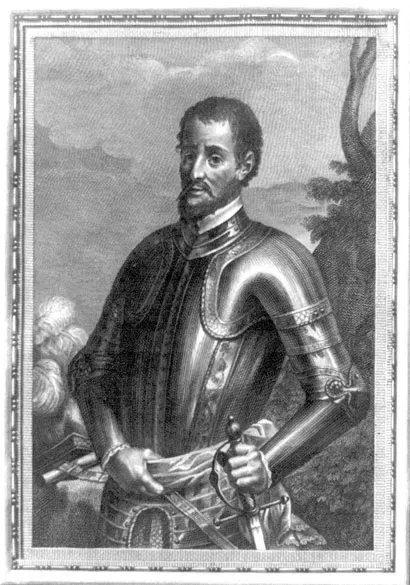
Direct Instruction
Initiate direct instruction for students over the life and expedition of Hernando de Soto. Students should take focused notes throughout direct instruction. Ensure that by the end of direct instruction, students know about:
- Hernando de Soto’s birth, his early life, and his expeditions in Central and South America
- De Soto’s expedition from Florida into what is now Arkansas, the first time Europeans had set foot in the region
- The challenges and opposition de Soto and his soldiers faced during their expedition
- How the expedition interacted with the Natives they encountered, the lie they told about de Soto’s immortality, the captives they took, and the land they raided
- De Soto’s sickness, death, and how the survivors hid his body
- The Caddo Nation’s reaction to the Spanish and the conflict between them
Engaging Secondary Sources
Students will read the CALS Encyclopedia of Arkansas entries on Hernando de Soto, Casqui, and the Caddo Nation. Students should be able to answer the following questions after reading, writing their answers on lined paper:
- Why were the Spanish exploring this part of North America?
- What physical challenges did the Spanish face traveling through Arkansas?
- How did Native Americans greet de Soto and the Spanish explorers?
- Where are the Caddo people now and why?
During this activity, students will read a secondary source critically and activate prior knowledge by thinking critically about sequence of events and cause and effect.
Analyzing Primary Sources
Display the images of Caddo girls’ hair ornaments, a Caddo drum, and traditional Caddo women’s hair ornaments to students via internet access, projection, color prints, or television. Students should identify key similarities between the photographs. Possible connections include: the use of stripes; vibrant colors, particularly red, purple, and teal; the use of feathers; ornamentation hanging from or woven into the hair; loose-fitting clothes cinched at the waist.



The purpose of this open analysis and discussion is to appreciate the culture of the Caddo and end the narrative of European involvement with one of indigenous perseverance after the fact. This lesson also demonstrates common themes present in interactions between Europeans and natives, and challenges students to think critically about primary sources.
Evaluation
In this lesson, students are being evaluated on their ability to actively read secondary sources, engage with primary sources, and make historical connections related to cause and effect and sequence of events.
Extensions
Possible extensions for this lesson include having students research another European expedition into North America, do further research on the Caddo Nation or perhaps another Arkansas-originating Native tribe, and find further examples of cultural artifacts from the Caddo Nation. All of this would be best presented in a visual multimedia format such as a slide deck or poster.
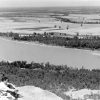



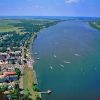
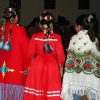
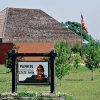

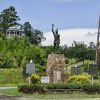

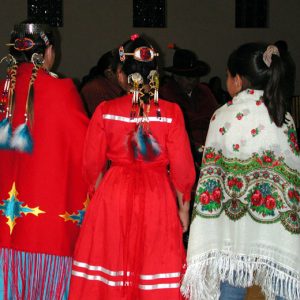 Caddo Dancers
Caddo Dancers  Caddo Drum
Caddo Drum  Caddo Hair Ornaments
Caddo Hair Ornaments 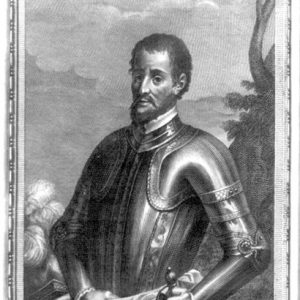 Hernando de Soto
Hernando de Soto 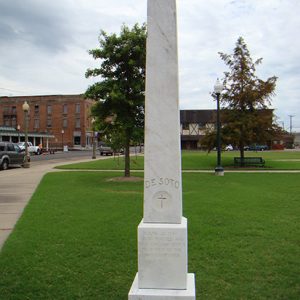 Hernando de Soto Monument
Hernando de Soto Monument  Parkin Archeological State Park
Parkin Archeological State Park 



"*" indicates required fields